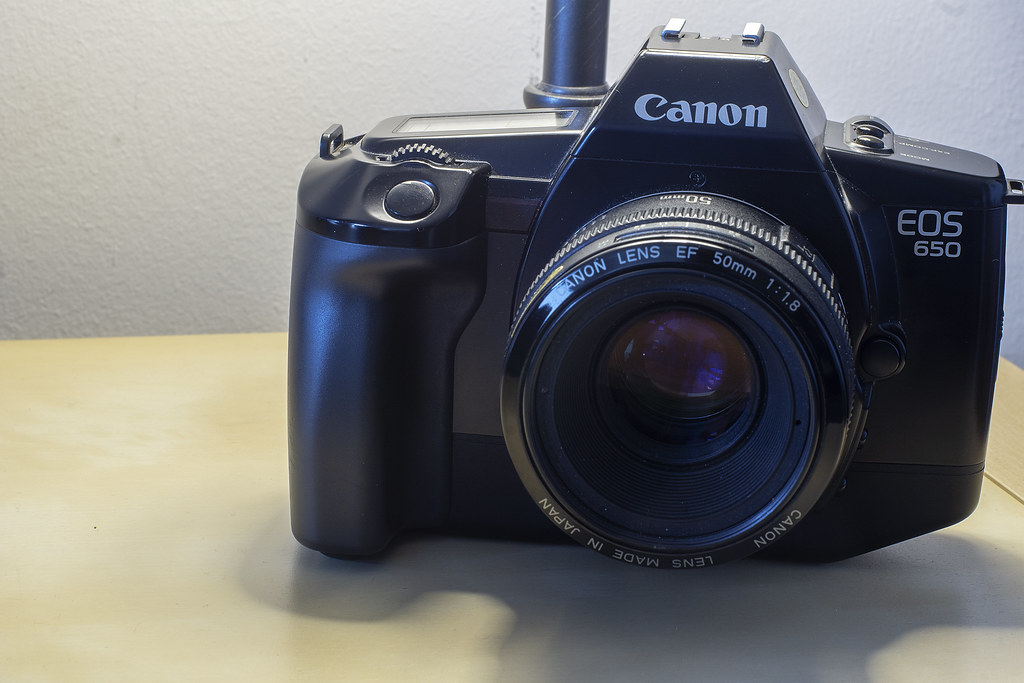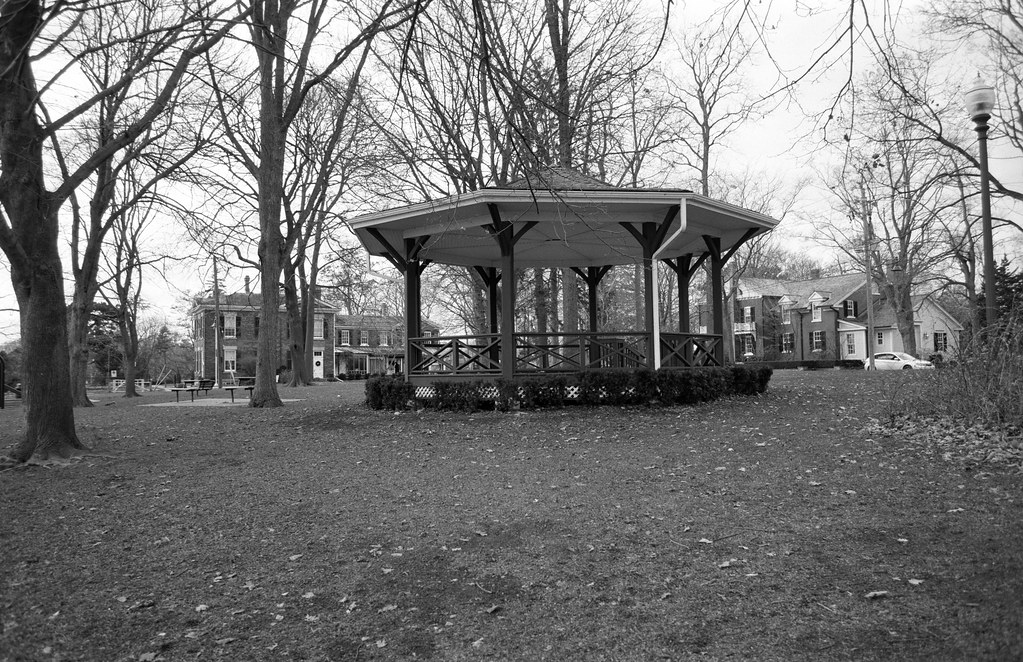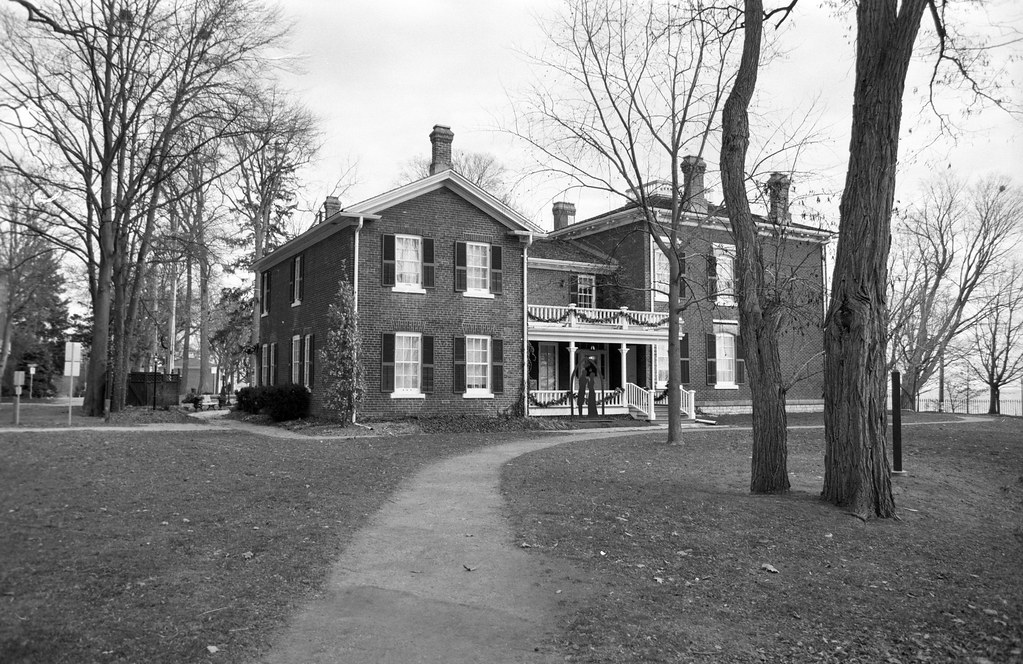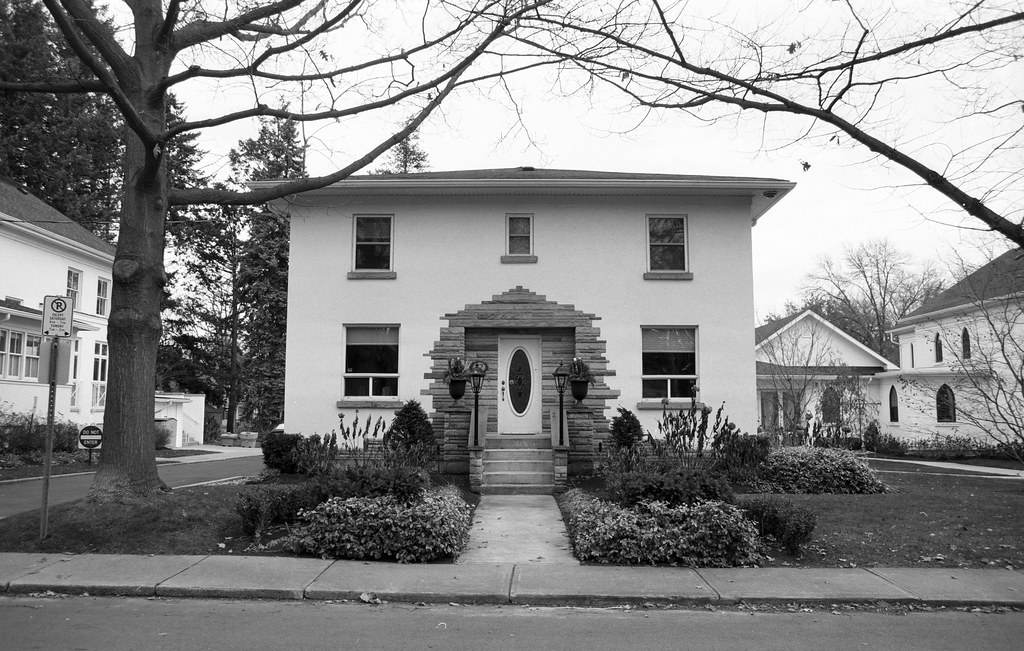When it comes to Canon cameras, you can count the number of times they’ve been featured on the one hand. I’ll admit that I am a Nikon guy, but I couldn’t say no when this beauty was offered up. The Canon EOS 650, while a fairly plain and no-nonsense camera, is a significant part of the history of photography. The EOS 650 is the first autofocus offering from Canon, and the lens mount it introduced changed the company’s direction. And while I was a little wary of the camera, it performed beautifully. It did take a bit of time to figure out some of the finer points of control, but that will teach me not to read the manual before taking it out. Thanks to (Great Uncle) George McCullaugh for providing this beauty for a review.

Camera Specifications
Make: Canon
Model: EOS 650
Type: Single Lens Reflex
Format: 135 (35mm), 36x24mm
Lens: Interchangeable, EF-Mount
Shutter: Vertical Travel focal plane shutter, 30″ – 1/2000″ + Bulb
Meter: Full Aperture TTL SPD Cells, EV1 ~ EV20 @ ASA-100, ASA-6 – ASA-6400
Autofocus: TTL-SIR /w BASIS, EV1 ~ EV18 @ ASA-100
Dimensions (WxHxD): 148×108.3×67.5mm
Weight: 660g
Power Source: 1x 2CR5
Year of Manufacture: 1987-89
Background
In November 1977, Konica released one of the world’s first production autofocus cameras. The C35AF was a simple fixed lens point-and-shoot that used the Visitronic AF system first developed by Honeywell. In basic terms, the Visitronic system used two CCD sensors and a microprocessor. Readings were taken from a pair of widely spaced viewing windows with a mirror and micro prism; the chip then calculated the needed to set the focus. This is considered a passive autofocus system. Canon’s response was 1979s AF35M. It was also known as the Sure Shot in the US market and Autoboy in the Japanese market. What set the AF35M apart from the C35AF because it used an active autofocus system, using a pair of near-IR Light Emitting Diodes and a receiver diode. While autofocus made sense for point & shoot cameras, SLRs were still in their infancy, but by the 1980s, things were moving in that direction. Canon, always trying new things, released the AL-1 in 1982. The AL-1 was still a manual focus camera. It had a unique focus-assist or quick focus system. Using a CCD sensor, a gridded viewfinder and a semi-silvered mirror, the camera could detect and assist the photographer get the right focus. But the world was already moving on; Nikon had the F3AF in 1980, and Pentax the ME F in 1981; both these cameras had autofocus. But the real change came in February 1985 when Minolta came out of nowhere and hit the ground with the Maxxum 7000, a commercially successful autofocus SLR for the new decade. It also introduced a boxy all-button and screen interface that changed the game. Canon, however, still needed to play catch up; the T80 took a similar approach to what Nikon and Pentax had done. Released in April 1985, the T80 used a modified FD mount lens, the focusing system from the AL-1. Canon also put the focusing motor in the lens, which separated it from Minolta, releasing 50mm, 35-70mm and 75-200mm options in the “AC” mount. But the T80 was short-lived, in production for less than a year. In its 50th anniversary celebration, Canon released its new EOS system, or Electro-Optical System, with 1987’s EOS 650. The 650 took a lot from the Maxxum line, blocky lines, screens and buttons but included some physical dials. Like Minolta, the EOS used a new lens mount, the EF-Mount, which used lenses that included a focusing motor in the lens. Like the 7000, the 650 was aimed at the advanced amateur market and proved an instant success which spawned a massive set of cameras and lenses which continue to serve Canon shooters to this day.




Impressions
It looks like a 1980s VCR. But we’re not here to judge a camera by its looks but rather by its function. While you can see the design lineage from the T90, rather than keep the curved, almost organic look of the camera, they moved more towards the look of the Maxxum 7000 with sharp, hard angles. However, the control surfaces on the 650 are nearly identical to the T90, right down to button placement and the single command dial. In general, I have nothing against simplifying the control surfaces, and it proved a simple task to learn how to operate the camera, some functions such as setting the ISO, rewind, timer, and AF modes I wish were more visible. But what I need to operate the camera is right in the open, well, sort of. Let’s get my biggest beef with the camera out of the way first, the selector dial. A small knob at the back of the camera on the same side as the LCD screen where you set the mode and power the camera on and off. In the “L” position, the camera is off; easy enough L for Locked. When I wanted to use the camera, I saw an audio symbol that had an annoying audio signal, so I didn’t put the knob there. Next, I had an “A” or a Green Box, well, A sounded like it was Automatic, so I picked the Green Square. Sadly on Green Square, you cannot change the mode. The camera does all the thinking for you. I should have read the manual and set the camera to A so I could choose between the standard P(program), Tv (shutter priority), Av (aperture priority), and M (manual). This brings me to a second beef, the lone command dial. I guess I’m spoiled with working with dual control dials or a control dial and a thumbwheel but running the full camera manual makes changing settings a bit painful. However, the placement of the command dial is perfect right by the shutter release, which makes running the camera in semi-automatic mode easy because you’re not hunting down the dial; it’s right there. The best part of the camera, however, is the viewfinder; it’s big, bright, and can be seen in low and bright light. The feedback is excellent without being in the way and generally makes the camera easy to use.




Experiences
This camera lets you know that you’re using it; there’s bulk, noise, and feedback with everything you are doing. Despite all the automation, it makes you work. Despite everything, the camera is enjoyable, has stood up to time, and still does exactly what you want without too many complaints. The camera is well-made, and the controls are fairly simple, opting for a hybrid of physical controls, menus, and buttons. The camera’s grip makes it easy and comfortable to carry, and the slight angle where the shutter release is located is a nice touch. The command dial (there is only one) has plenty of feedback. The film door has a security interlock, which can be tricky to open, but once you have it opened, loading film is quick, make sure not to put the leader in too far. Once done, you have two modes, the A Mode or Green Square. If you want no override control, set it to the green square. This puts the camera in program mode and has no way to get out; it also does not allow you to adjust the film speed. If you prefer a little more control, set the dial to A. This gives you access to adjust EV compensation and access to automatic, semi-automatic and metered manual modes. There is a small second set of controls under a door; you can adjust your ISO, back-button focus, drive modes, and self-timer. These are a little difficult to manage especially adjusting the ISO manual that requires two buttons to be pushed. Here you’ll also find a battery check and mid-roll rewind. Once you’re done with the setup, you’re off to the races; the autofocus is slow but accurate, with only a single AF point. And it can be a bit noisy with older lenses. But the viewfinder is bright with plenty of information, including exposure information and a focus assist indicator. Overall the camera itself is plain and offers a similar but slightly different experience from the Maxxum 7000.




Optics
Unlike Nikon and Pentax, which both shoehorned autofocus functionality onto their F and K mounts, respectively, the EOS and EF systems were new from the ground up. But the nice thing about the EF mount on the 650 is completely compatible with modern EF lenses. Just don’t mount an EF-S lens; you will damage both the camera and the lens. All those wonderful L-Series lenses with USM motors will mount and function perfectly. Of course, the lens itself is without any real controls save the auto/manual focus switch. And you can get some older AFD lenses for a little less money or stick to the plastic fantastic 50/1.8 as I have for mine. And the Canon lenses, even the cheap ones, are optically sound and make excellent images. I never was one to say Nikon was better than Canon or vice versa because I honestly stick both optics in the same category and rating. Either way, the EF-Mount makes the camera shine among those of the 1980s, the same with the 7000 for near full compatibility with their modern lenses.




Lowdown
Like the 7000, the 650 is a K-Car; it’s not overly exciting to use, and it gets the job done and done well. So there’s a place for the camera on myself as a great way to introduce people to film photography, mostly those who are used to Canon equipment, as the controls between the 650 and the modern cameras of today are similar. The one thing of note is that the camera does take a 2CR5 battery which is only available at speciality battery or camera stores and can get fairly expensive. But it does last a long time, so it all balances out. The camera is readily available on the used market, and if you’re lucky, you can grab one with a lens for under 100$; the bodies run from 10 to 60 dollars. Making it a perfect way for an inexpensive entry into film photography if you have a selection of EF lenses. So yeah, this Nikon guy is sold on Canon, but don’t expect me to switch systems.
Further Reading
Don’t just take my word on the EOS 650; you can check out the reviews by other awesome camera reviewers!
Casual Photophile – Canon EOS 650 Camera Review – The Autofocus Revolution Arrives
Lomography – A Review of the Canon EOS 650
Scott Locklear – Canon EOS 650 Camera Review
Down the Road (Jim Grey) – Canon EOS 650 Review
1 Comment